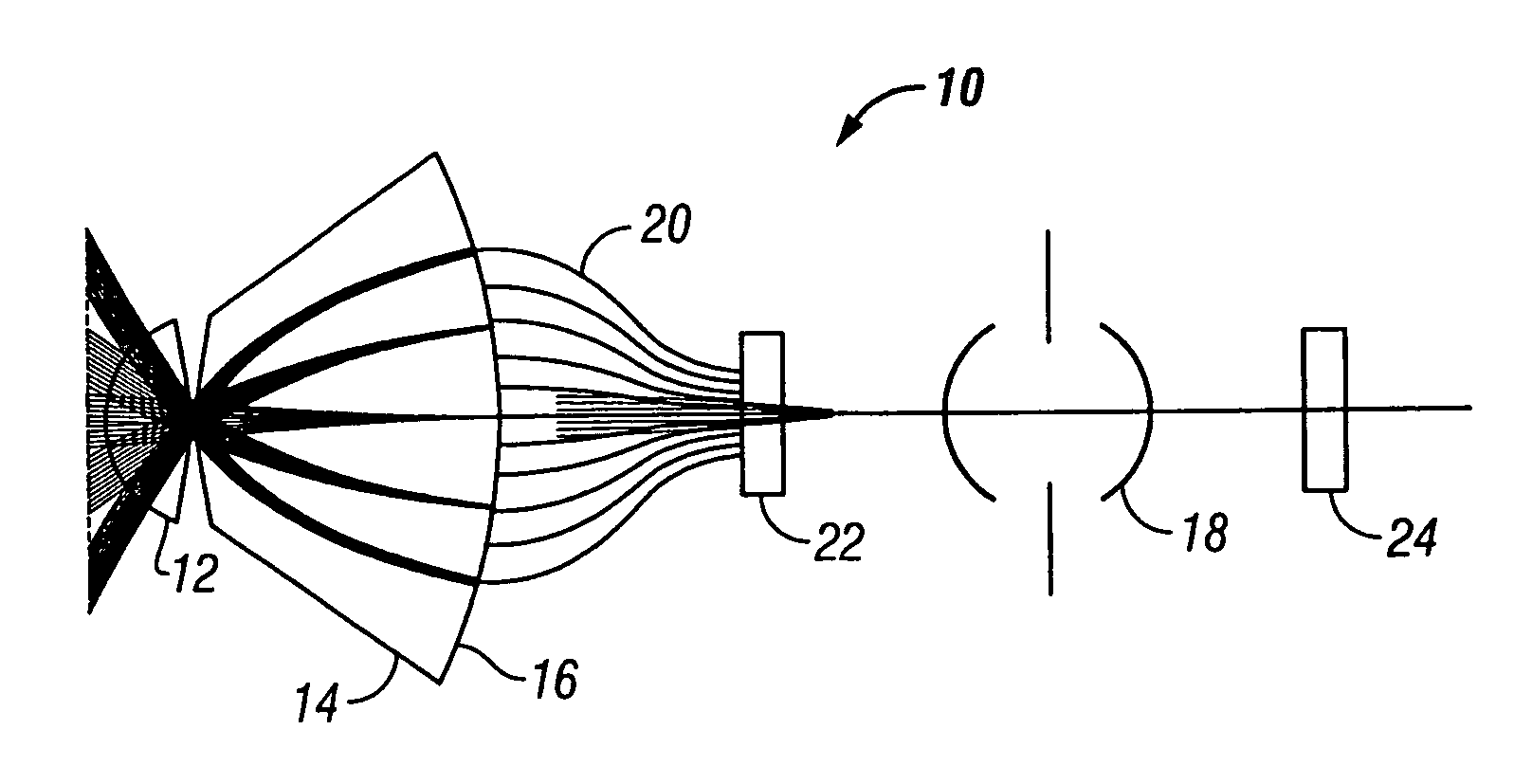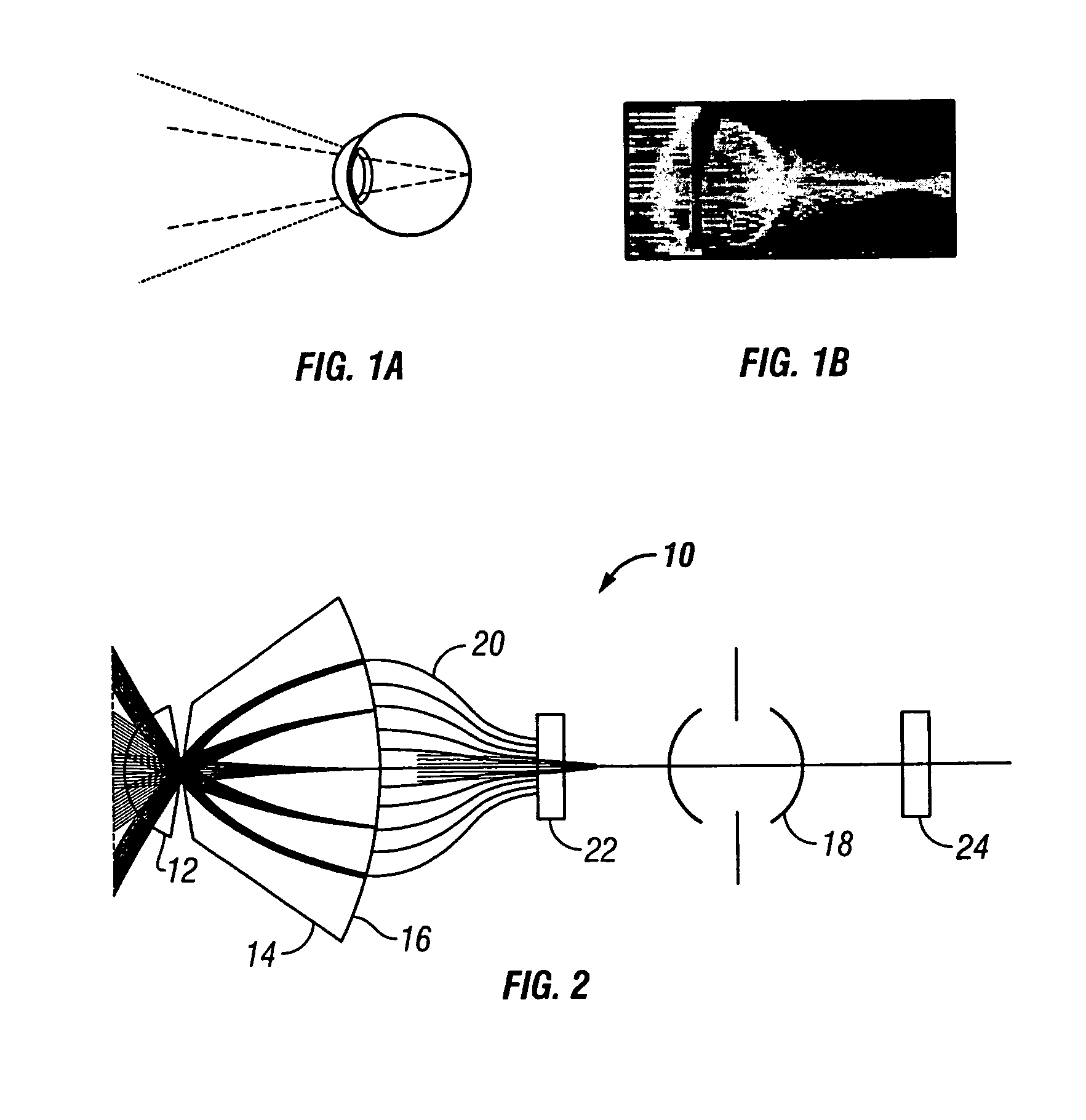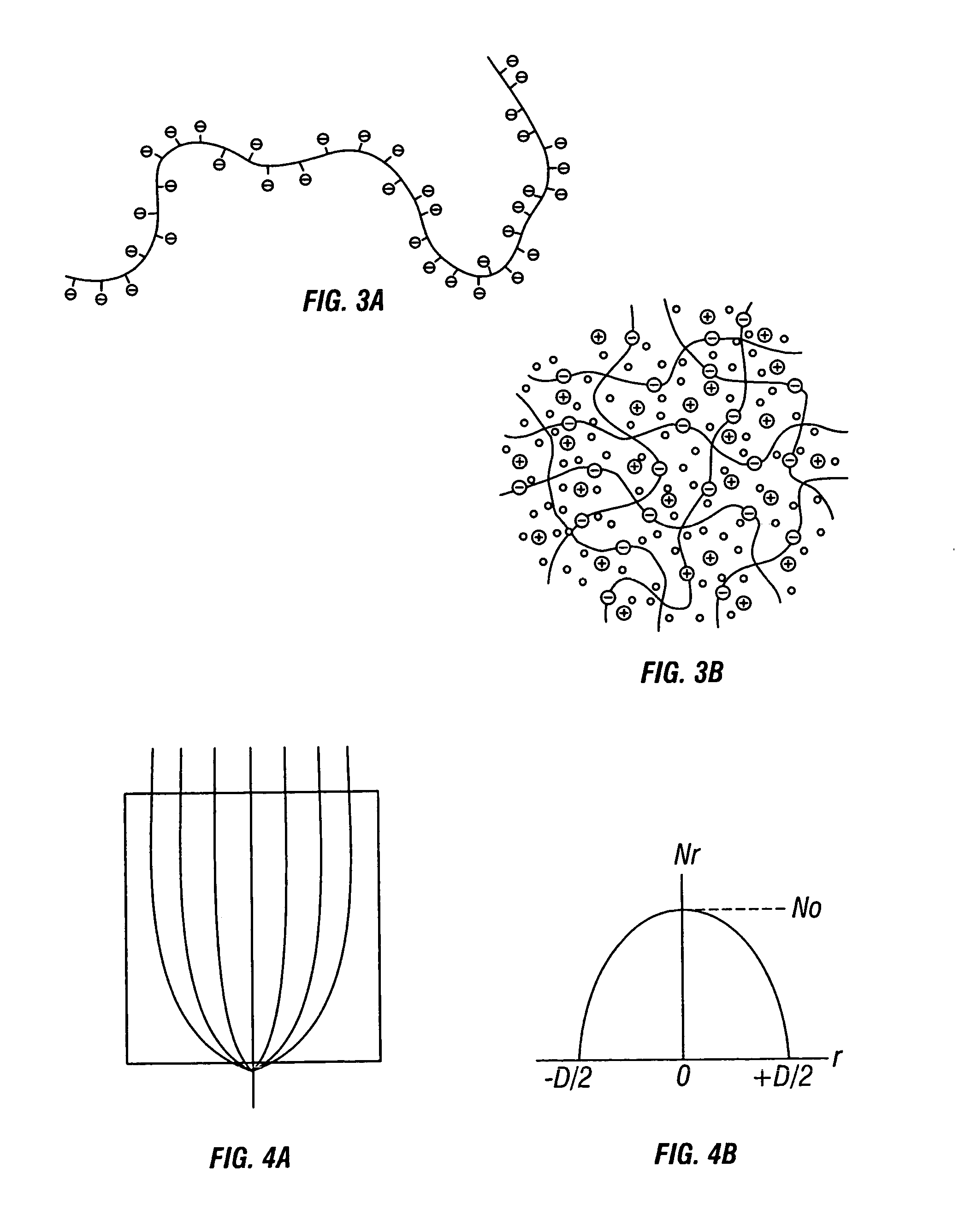Variable field of view optical system
a technology of optical systems and variable fields, applied in the field of variable field of view optical systems, can solve the problems of limiting the size of manmade imagers, limiting the capability of imaging systems, and preventing manmade systems from completely duplicating
- Summary
- Abstract
- Description
- Claims
- Application Information
AI Technical Summary
Benefits of technology
Problems solved by technology
Method used
Image
Examples
Embodiment Construction
[0018]In the human eye the cornea and the lens form the imaging mechanism and are responsible for focusing a clear image onto the retina. The two lenses are both fixed in position. To focus an image on the retina, the interior lens remains stationary, but changes shape. Octopus eyes are similar to those of humans in that each has a lens, iris, pupil, and retina, but no cornea. FIG. 1 outlines the anatomy of the human and octopus eyes. The octopus relies primarily on its vision to survive, with its stereoscopic binocular vision both forward and above, providing an almost 2π steradian field of view. The octopus changes the position of its lens relative to the retina in order to keep both near and far objects in sharp focus at all times—a definite advantage for an animal that must be constantly searching for nearby food, but still keep an eye on the horizon for possible predators. The present invention mimics this focusing mechanism by dynamically altering the refractive index of the o...
PUM
 Login to View More
Login to View More Abstract
Description
Claims
Application Information
 Login to View More
Login to View More - R&D
- Intellectual Property
- Life Sciences
- Materials
- Tech Scout
- Unparalleled Data Quality
- Higher Quality Content
- 60% Fewer Hallucinations
Browse by: Latest US Patents, China's latest patents, Technical Efficacy Thesaurus, Application Domain, Technology Topic, Popular Technical Reports.
© 2025 PatSnap. All rights reserved.Legal|Privacy policy|Modern Slavery Act Transparency Statement|Sitemap|About US| Contact US: help@patsnap.com



